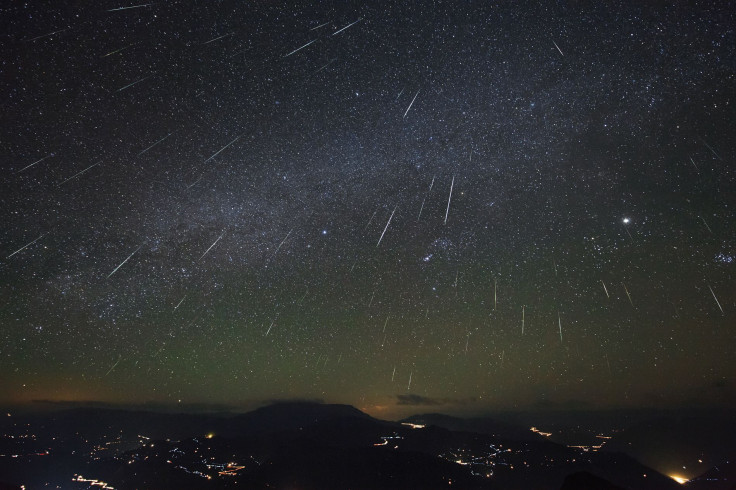Skywatching: Solar Eclipse, Comet To Grace The Skies This December
KEY POINTS
- There will be quite a few exciting sky events this December
- Comet Leonard may possibly be visible to the naked eye, according to NASA
- The Geminids will peak on the evening of Dec. 13 to 14
December is certainly ready to wrap up a year of incredible skywatching. From a total solar eclipse to a visible comet, the month is packed with even more sky events for enthusiasts everywhere.
Total Solar Eclipse
The month of exciting skywatching begins with the total solar eclipse that's happening Saturday. A total solar eclipse takes place when the moon is between the Earth and the sun, thus casting a partial or full shadow on the planet, NASA explained.
This particular event will be visible for some people in the Southern Hemisphere. Specifically, skywatchers in parts of Saint Helena, Namibia, Lesotho, South Africa, South Georgia and Sandwich Islands, Crozet Islands, Falkland Islands, Chile, New Zealand and Australia will get to witness a partial solar eclipse, according to NASA. Those who wish to see the event live from these places should not forget to wear solar eclipse glasses for safe viewing.
The total solar eclipse will only be visible from Antarctica. However, that doesn't mean most people won't get to see the stunning event as there will be a livestream of the event from the Union Glacier, giving us a unique view of the total solar eclipse from the remote continent.
Comet Leonard
Comet Leonard is set to be the "brightest comet of the year," NASA noted, and it will pass closest to the Earth at 8.54 a.m. EST on Dec. 12. Although it's not easy to predict when and how bright a comet will appear, comet Leonard is expected to be visible with binoculars and may even be visible to the naked eye. So far, it is expected that the comet will reach its peak brightness on Dec. 13 or 14.
Those who would like to witness the comet are being advised to stay up to date on the news because this will actually be a rare opportunity. According to NASA, Comet Leonard will reach its closest approach to the sun on Jan. 3, 2022. After that, it will go out of the solar system and "never" come back again.
Geminid Meteor Shower
Just days later, another bright event will grace the December skies as the Geminid meteor shower will peak on the evening of Dec. 13 to 14. As the American Meteor Society (AMS) explained, avid skywatchers often mark their calendars for the Geminids because this "major" meteor shower is typically the "strongest" one of the year. NASA has also regarded it as one of the "best and most reliable" meteor showers of the year.
According to the agency, the event is expected to peak at around 2 a.m. on Dec. 14, with the best time to view it being after the moonset at 2.59 a.m. EST and before any signs of dawn begin to show. Under ideal conditions, skywatchers may get to witness some 140 to 150 visible meteors per hour during the peak. Those who are already excited may also try catching a glimpse of them in the mornings leading up to and after the peak.
Everyone is advised to give their eyes time to adjust to the darkness and stay away from sources of light such as car headlights and cell phone lights to have a better chance of viewing the "bright and intensely colored" Geminids.
Ursid Meteors
A "strictly" northern hemisphere event, the Ursids meteor shower will be active from Dec. 13 to 21 and will reach the peak on the evening of Dec. 21 to 22. According to the AMS, the Ursids are often neglected since the meteor rates are less than those of the Geminids, with a typical rate of five to 10 meteors per hour. Furthermore, it also happens to peak quite close to Christmas.
Although it may be a little more subtle compared to the other sky events in December and in the past year, for those in the northern hemisphere, the Ursids can also be a great yet simple way to cap an excellent year of skywatching.

© Copyright IBTimes 2024. All rights reserved.






















